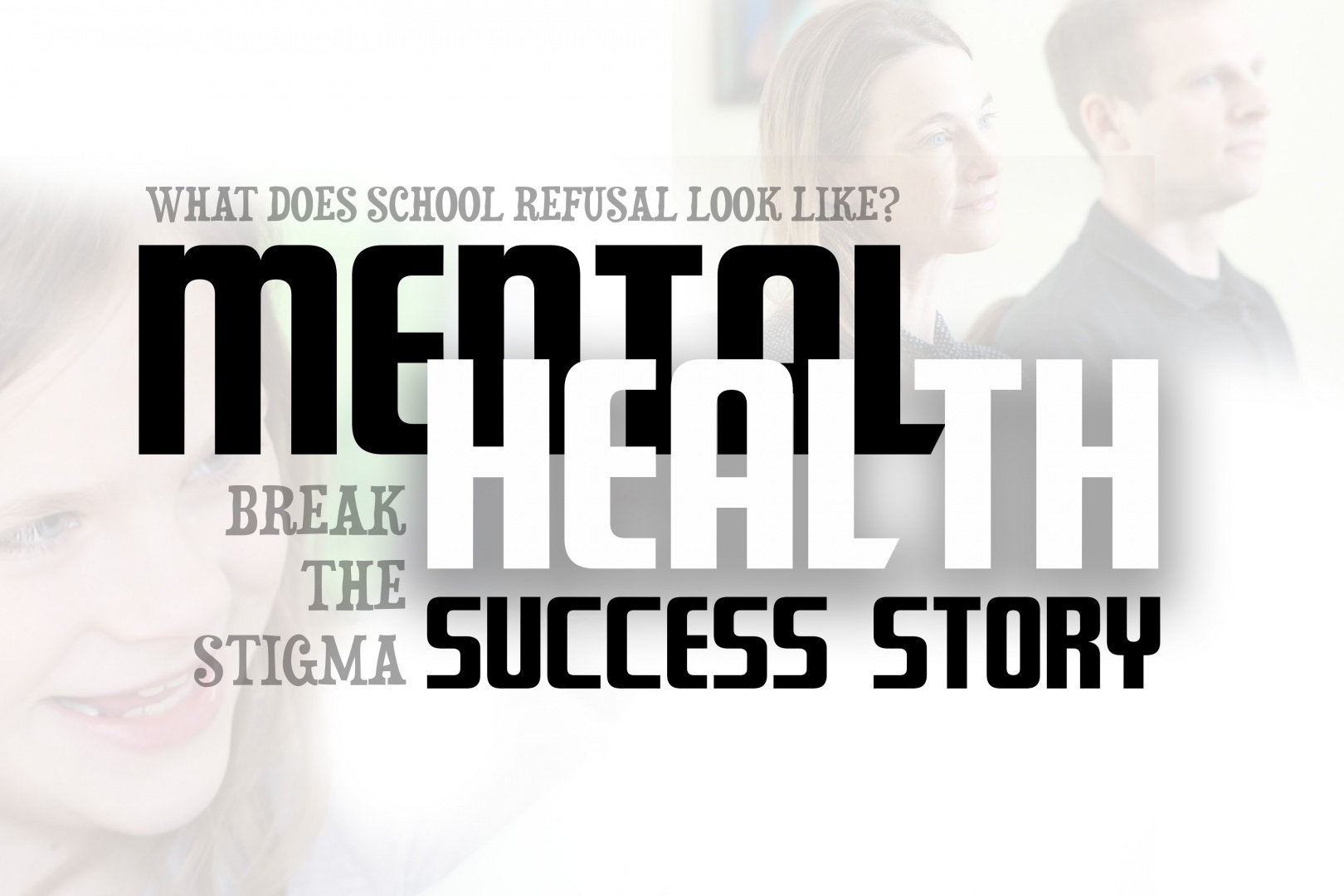What Does School Refusal Look Like? A Mental Health Story

Becca is from all accounts a very normal elementary school student who loves school. She is not what comes to mind when you think of mental health. In fact, she comes from a stable, middle-class family that has avoided many of the risk factors that are often associated with mental health. Her mom, Annie, has a specialist in education degree and her dad Andy works at the university in IT security. They have open lines of communication, promote Becca’s self-esteem, and are cognizant to help equip all three of their children for their future.
But last year they were rocked with a mental health issue they didn’t see coming: anxiety and school refusal. Anxiety-based school refusal affects 2 to 5 percent of school-age children. Last year, what started for Becca as a simple digestion issue turned into a full-fledged battle every morning. “We understand now that it was a manifestation of anxiety, but we had no idea what was going on. We would physically try to pick her up and take her school and we couldn’t,” said Annie.
School refusal is ugly. It involved screaming, kicking, and hitting from a student who is generally kind, soft-spoken, and caring. Annie and Andy saw a raw, primal fear in their daughter that they had never seen before. It wasn’t rational and it didn’t make sense to them at first. Annie recalls her saying, “I would rather die than go to school. For her, that was very much her truth. And as a parent, that is very hard to hear.” The scariest part for her parents is that they believed her.
At the end of every episode, no one felt good or got what they wanted. Becca felt bad and her parents helpless to finding a solution to a problem they didn’t see coming. “Every morning, Becca would say that today is the day,” but for weeks it never came. It’s a misconception to think that she did not want to go to school. “Becca wanted to go to school. It was just as soon as she reached that threshold, she couldn’t make herself go across.”
It’s important to understand the difference between school refusal and truancy. Truancy generally refers to an illegitimate absence from school, often without parent permission. School refusal, on the other hand, refers to anxiety-based absenteeism. These children have difficulty going to or remaining in school and are often described as fearful or anxious.
For weeks, nothing worked and they kept Becca’s problems to themselves and allowed the stigma of a mental health concern consume them. Every day, after feeling like they failed at getting Becca to school, they made the dreaded call to the school to once again inform them that she would miss another day. “It’s embarrassing to have to call the school every morning and say that my kid is not going to be in… again…”
Annie made every attempt to make staying at home as non-reinforcing as possible. “I remember being in the kitchen, having to be mean mom, and then just collapsing into a puddle and sobbing because I thought is this our new norm? Is this what her future looks like? Do I home school her? I struggle to be a good mom, I don’t want to have to be a teacher on top of that.”
As difficult as it was, the Almquist family was strong enough to approach their school. When they did, everything changed. The challenges at home continued for some time, but Fellows Elementary said, “whatever you need, we’re here,” and began the process of getting Becca back in the classroom. Their willingness to help Becca lifted a cloud off of Annie and her family. One of the first things the school did was to eliminate Becca’s unexcused absences.
Getting Becca to school was still her parent’s responsibility, but now that the school understood her struggles, they were able to get a re-entry plan in place that included a compassionate and supportive team, routines, and structures. The re-entry plan included dropping off at 9:00 o’clock after school had already started, using the most discreet door in the building, having a greeter, and establishing a way for Becca to have control over the process. Becca came up with the post-it note system.
She had a stack of colored post-it notes and any time after 11:30 a.m., she could put one on her desk, quietly indicated to her teacher to check in on her. For the first week, that generally meant that she wanted to go home. But over time, check-ins turned into just that and after two weeks of reacclimating to school, she was attending full days. The other supports, such as arriving after school began, were also slowly taken away.
For awhile, Becca acted like a boiling tea kettle. She began to succeed at school only to save her struggles for home. For her parents, this was a win and now a new norm that their family lives with.
Today, we can accept this as a mental health success story. But it’s also indicative of all mental health crisis: situational and unpredictable. Annie approached Superintendent Risner to share their story and show her appreciation of how Fellows Elementary handled their concerns. They are taking their crisis and using it as a form of empowerment by making it okay to talk about.
“Our journey with anxiety and mental health, in general, has been overwhelming. But I guess the hardest part is coming out and talking about it publicly. It makes me nervous and concerned because it’s not just my story, it’s Becca’s story… and our story. So I have some reservations. I’m nervous. I’m concerned. I’m worried. The stigma… there’s a lot, but we’re ready.” Thank you Almquist family for your courage in sharing your story with us.